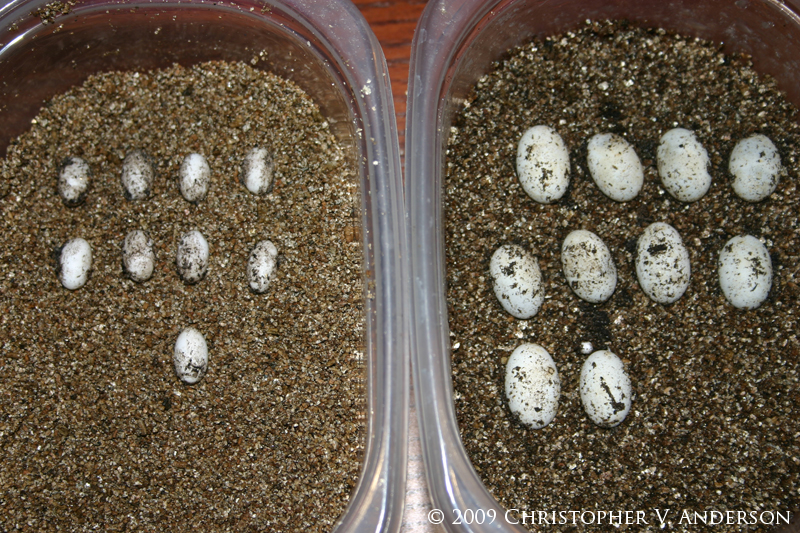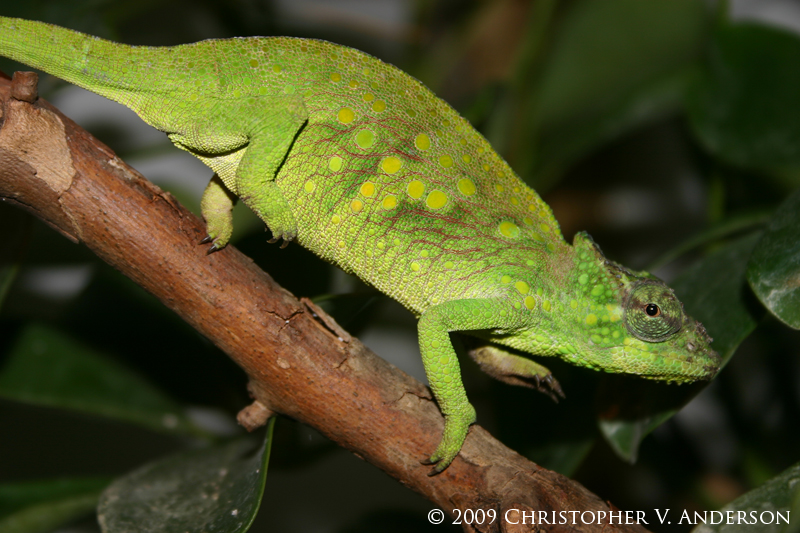Chris Anderson
Dr. House of Chameleons
I had a female Trioceros montium drop a clutch today. Its the third clutch she's dropped for me and I've bred her to my male a couple times now. You don't realize how much eggs grow during incubation sometimes. These two clutches are both from the same female Trioceros montium. On the left you see a clutch that is 2 hours old and on the right, you see a clutch that is 162 days old:

Its amazing how much the first clutch of eggs has grown! And here's the female after she finished laying:

Chris

Its amazing how much the first clutch of eggs has grown! And here's the female after she finished laying:

Chris




